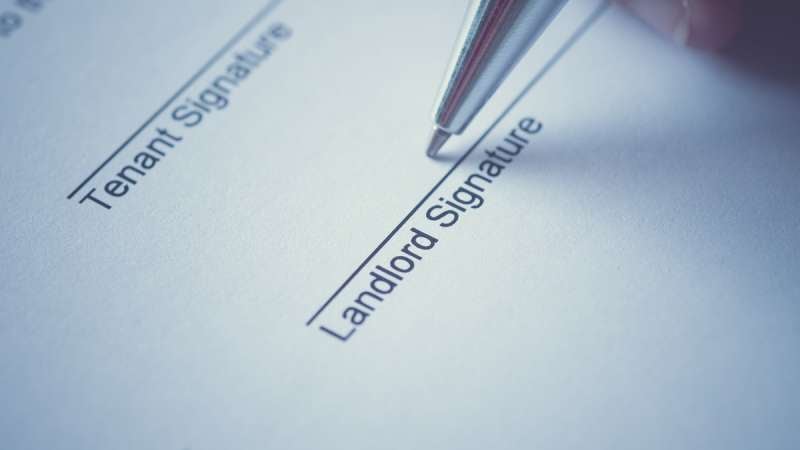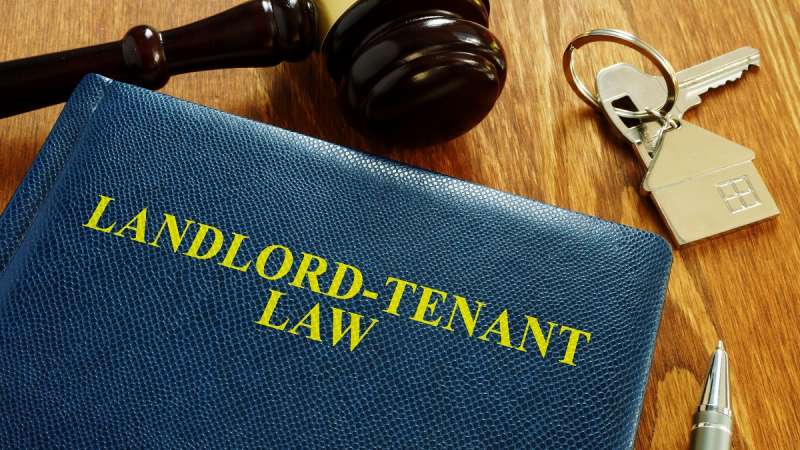What is a Dilapidations Claim?
A dilapidations claim refers to a legal action brought by a property owner or a tenant against another party for damages or deterioration to a property.
For example, a dilapidation claim may be brought by a landlord against a tenant of commercial property for failing to comply with the tenant's repair obligations under a lease.
The purpose of a dilapidations claim is to seek compensation for the costs of repairing or restoring the property to its original condition prior to the damage incurred.
There are various forms of dilapidations claims, such as interim and terminal dilapidations.
Terminal dilapidations can be made by a landlord at the end of a lease. A landlord may also be able to bring an "interim dilapidations" claim during the term of a lease.
Our property litigation lawyers are experts who have handled complex dilapidations claims.
How Our Dilapidation Claims Team Can Help
Myerson Solicitors' property litigation team have years of experience handling complex dilapidations claim disputes.
Our team of dilapidations dispute solicitors assess each matter on its own facts and advise on the best course of action depending upon the objective you want to achieve.
We assist with all types of dilapidations claims and aim to explore alternative dispute resolution options to avoid court proceedings whenever feasible.
If you are seeking professional advice from solicitors with a proven track record for successfully handling dilapidations claims, please do not hesitate to contact a member of the property litigation team.
Commercial Property Dilapidations Claims
Interim Dilapidations Claims
An interim dilapidations claim is a legal action initiated by a landlord during the lease term against a tenant for breaches of repairing obligations.
It typically involves notifying the tenant of observed damages or neglect to the property and requesting prompt rectification to maintain the property's condition.
Terminal Dilapidation Claims
A terminal dilapidations claim is a legal action initiated by landlords against tenants to recover the costs associated with repairing any damage or neglect to the leased property beyond normal wear and tear.
Terminal claims crystallise at the end of a lease term when the tenant is leaving the property and arise when the property is not returned in the condition required in accordance with the commercial lease.
The landlord may seek compensation for repairs necessary to return the property to its original condition as per the terms of the lease agreement.
Terminal dilapidations claims typically involve landlords seeking reimbursement from tenants for various expenses, including lost rental income, service charges, and costs incurred to complete the necessary works, provided these costs are deemed reasonable.
Schedule of Dilapidations
To bring a dilapidations claim it is essential to prepare and serve a schedule of dilapidations on the tenant.
A schedule of dilapidations should carefully itemise the landlord's claim and identify which commercial lease obligations the tenant has failed to comply with.
There are two kinds of schedule of dilapidations: interim and terminal.
The primary difference between interim and terminal schedules of dilapidations lies in their timing and purpose:
- Interim Schedule of Dilapidations: issued during the term of the lease and serves as a notice to the tenant regarding observed breaches of repairing obligations.
- Terminal Schedule of Dilapidations: issued towards or shortly after the end of the lease.
Our property litigation lawyers collaborate with experienced surveyors who specialise in creating or assessing Schedules of Dilapidations. We can provide recommendations for these surveyors to assist you in your needs.
The tenant will have an opportunity to respond to the schedule of dilapidations prior to any Court proceedings being issued.
The Process for Making a Dilapidations Claim
Upon receiving a schedule of dilapidations and a Quantified Demand from the landlord, the tenant has 56 days to respond, either agreeing or disputing the alleged breaches and specified remedial works.
Both parties, along with their respective professional advisors, such as surveyors and solicitors, are advised to meet on a 'without prejudice' basis within 28 days of the tenant's response. This meeting aims to resolve the dilapidations claim or at least narrow down the disputed issues; it can occur before the tenant's response if agreed upon.
Additionally, the parties are encouraged to consider alternative dispute resolution methods such as mediation or early neutral evaluation.
If no settlement is reached, the landlord must provide a more detailed quantification of losses, either through a formal diminution valuation or an account of actual or expected expenditure and financial costs.
Should the tenant wish to raise a section 18 defence or any other defence related to diminution in value, they must confirm this within 56 days of receiving the detailed quantification of losses.
Section 18 Landlord and Tenant Act 1927 pertains to the statutory mechanism for valuations assessing the loss in value to the landlord's interest due to the tenant's failure to undertake repairs.
After this, both parties must engage in a 'stocktake' period before the landlord resorts to submitting their claim for determination by the court.
Dilapidation Claims Case Studies
Client Intro: Commercial Landlord
Our client is a landlord of a significant portfolio of commercial properties.
Case Overview:
One of the properties is located in Northumberland and was leased to Marks & Spencer's PLC (M&S). M&S assigned the lease to The Factory Shop Limited and M&S entered into a Deed of Guarantee and Indemnity in respect of that assignment.
The Factory Shop entered into a CVA, and the CVA included a provision for the surrender of the lease and compromised the company's liability for terminal dilapidations.
The CVA cut down M&S's secondary obligations in the guarantee, meaning that M&S had no liability under the guarantee in respect of the terminal dilapidations, but the CVA could not and did not cut down M&S's primary obligations in the guarantee, meaning that M&S remained liable for the dilapidations in full as if the CVA had not existed.
The lease was subsequently surrendered, and our client moved to address terminal dilapidations, carrying out repair works to the value of £130,000
Laura Pile, a Partner in the Property Litigation team said "This was a complex matter where we argued that the indemnity was not compromised by the CVA."
Client Intro: Self Invested Pension Plan
Our client has a rental portfolio across England and Wales.
Case Overview:
We advised them both during the term and at the term end in relation to the repair and condition of the property. To avoid the section 18 cap, an inspection was undertaken during the term to identify items of disrepair.
Various works were then undertaken during the term to remedy the disrepair and the cost of these works will be recovered from the landlord as a debt.
Why Work With Our Property Litigation Team
- Our property litigation lawyers have been ranked as a top-tier law firm by the Legal 500 for the last seven years.
- You will have access to more than 30 property experts across the Myerson Property Group, including commercial property, construction, residential property conveyancing and development.
- You will receive city-quality commercial property legal advice at regional prices.
- We provide a partner-led service to ensure you receive the best legal advice and commercially-minded support.
- Our property litigation solicitors compromise a large team which is capable of meeting your deadlines.
- We understand that each transaction is bespoke to your individual circumstances and that you need support from a property lawyer who is experienced in dealing with a wide variety of clients and types of work.
- We are a full-service law firm operating from a one-site office, which means our teams communicate effectively and efficiently.
- We use the latest technology to ensure that we are working as efficiently as possible and that geographical distance is no bar to us from providing excellent client service.
- We were the winners of ‘Property Team of the Year 2021’ at the Manchester Legal Awards.
- We provide free newsletters and webinars to all our clients to keep you up to date with the real estate sector and changes in the law. Watch our latest property update webinar here.
- Take a look at the Myerson Promise for further benefits of working with us here.
Dilapidation Claims FAQs
What is a Quantified Demand?
A Quantified Demand is a document issued by a landlord to a tenant detailing the financial costs associated with repairing any damages or breaches of lease obligations identified in a schedule of dilapidations.
How long does a landlord have to make a dilapidations claim?
The timeframe for a landlord to make a dilapidations claim typically depends on the terms outlined in the lease agreement.
However, it's common for landlords to initiate a dilapidations claim either towards the end of the lease term or shortly after the tenant has vacated the property.
The landlord is expected to provide the schedule of dilapidations to the tenant within 56 days of the lease's expiration, although this timeframe isn't legally binding.
Who has to pay the costs of a dilapidations claims?
If the tenant neglects property maintenance or fails to restore alterations, the landlord can seek reimbursement for remedial expenses and possibly claim rent losses during the repair period.
In court, the losing party may incur substantial costs and professional fees.
Moreover, non-compliance with the protocol steps can influence the court's decision on cost responsibility.
Testimonials
Our Property Litigation Team
Home-grown or recruited from national, regional or City firms. Our property litigation lawyers are experts in their fields and respected by their peers.
Contact Our Experts
You can contact our lawyers below if you have any more questions or want more information:







